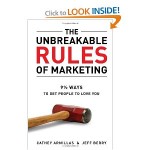Positioning is one of the many “P”s in the list of multiple “P”s associated with marketing. If you haven’t given much thought to how your product, product line or service is positioned, you might want to do that. And remember that positioning is not what you think you are saying to your prospects and/or customers, but rather what they perceive as your positioning. Because no matter how clever you try to get, prospect/customer perception is reality as far as they are concerned. Watch this video.
Think about a commodity product like gasoline. ARCO positions itself as a supplier of “good” gas for your car at the lowest price. Chevron/Texaco positions itself as a supplier of GOOD gas that will keep your car’s engine clean and prolong its life. There is no mention of price. ARCO sells a lot of cheap gas at (relatively) low margins. It aims for the frugal consumer. Chevron/Texaco probably sells less total gas per location than an ARCO station but has (relatively) higher margins. It aims for the more affluent consumer. Both companies are making billions of dollars per year in profits.
Both companies are selling the same product. A product that serves the same purpose. Yet they are clearly positioned differently. And both positions seem to be successful.
Think about a company like Starbucks. They don’t position their cup sizes as small, medium and large. They are tall, venti and grande. You might bristle at paying $3.15 for a “small” mocha when you can get one at McDonald’s for a lot less. But for a “tall” one? Well, that’s a different thing altogether. Coffee, chocolate syrup, milk, whipped cream, cup. 12 ounces. The differences? Positioning and, of course, price (which is another one of the critical marketing “P”s).
There are many other examples of positioning for maximum market share and maximum profitability. If you have an example you’d care to share, we’d love to hear about it. Please do leave a comment. And think about your product, product line and/or service positioning. It is truly important. Thanks for reading (and watching).


